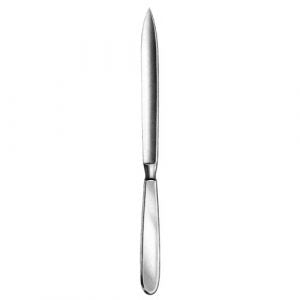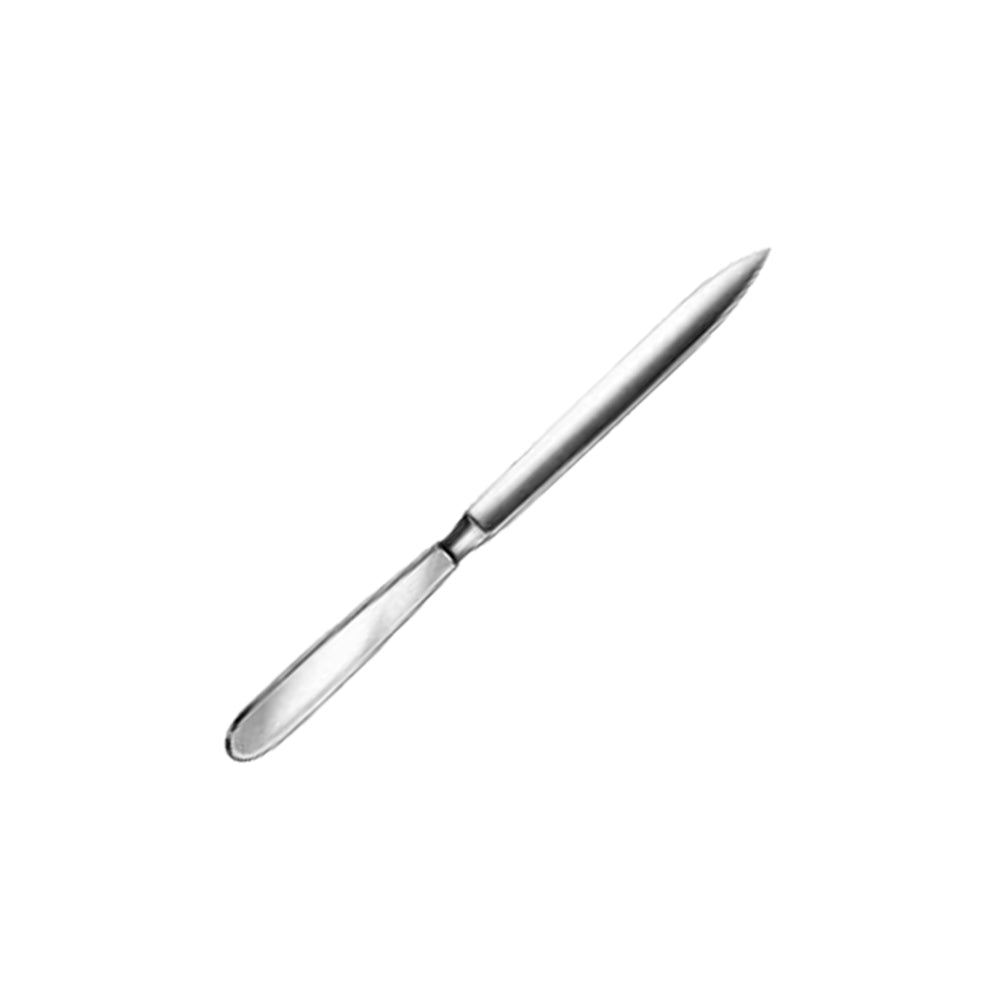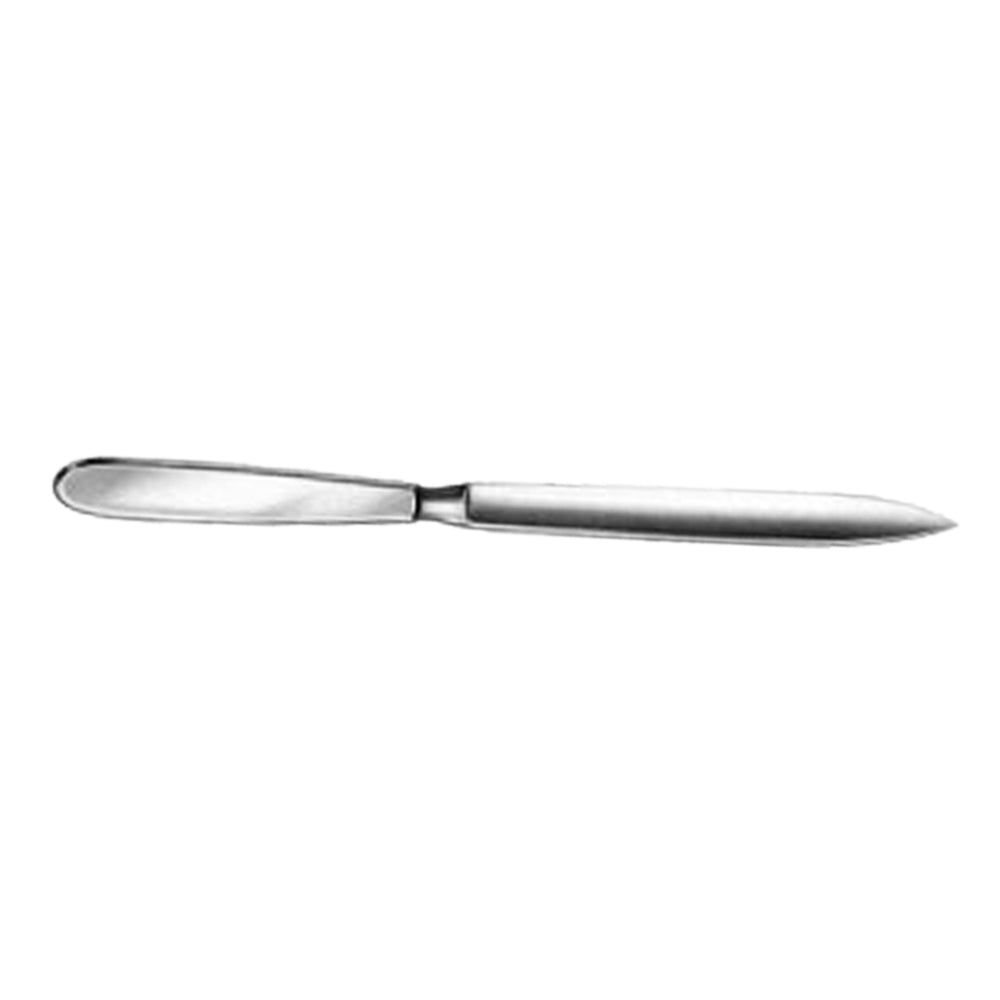


Liston Amputating Knife (13", Blade 8"): A Classic Surgical Instrument for Precise Amputations
When it comes to historic and highly effective surgical instruments such as this amputating knife, Liston holds a special place in the history of medicine. The name is a reference to the famous 19th-century Scottish surgeon Robert Liston; the knife was designed to improve speed, accuracy, and effectiveness during the amputation of limbs. The latest version, 13 inches long and equipped with an 8-inch blade that is razor-sharp, remains an essential tool in surgical education as well as in select areas of clinical practice today.
What is a Liston Amputating Knife?
This Liston amputating knife is a straight-bladed, long surgical knife that is designed to facilitate rapid and effective soft tissue cutting during the process of amputations. It was originally used before the advent of modern anesthesia. Speed was vital for this knife, and it was designed to reduce the amount of time patients spent suffering.
The latest model typically has a 13-inch overall length and an eight-inch blade, which allows for long, broad cuts. The design allows for little resistance while cutting through skin, muscles, and fascia with only one stroke.
Design and Features
Blade Length: 8 Inches
Constructed of surgical-grade or high-carbon steel, the blade is razor-sharp and tapered for precision. Its length permits surgeons to create a single, continuous cut around the limb, eliminating the necessity of multiple cuts.
Overall Length: 13 Inches
The longer handle offers greater grip in terms of leverage, control, and control during the cutting process.
Straight, Narrow Blade
The design is specifically designed for linear incisions. This straight-line design decreases drag, making tissue removal easier and quicker.
Ergonomic Handle
A lot of times, they are built with ribbed or non-slip surfaces, which gives the user a user grip is secure even when operating under high pressure.
Historical Significance of the Liston Knife
Robert Liston was famous not only for his surgical skill but also for his incredible speed, often doing amputations within 30 seconds. His knife design emphasized:
- Maximum efficiency
- Minimum trauma
- Clean incisions
Although the times have changed and anesthesia has become commonplace, this Liston knife remains a symbol of surgical innovativeness as well as discipline. It's still used in certain situations and also for educational demonstrations.
Modern Applications of the Liston Knife
While power saws and other modern tools have replaced some operating rooms but it is still the Amputation Liston Knife is still used in:
Field and Emergency Surgeries
In harsh or combat conditions, where power tools aren't readily available, This knife provides an easy yet efficient solution.
Veterinary Amputations
The knife is utilized for animal surgery, particularly large-animal amputations that are performed on rural farms.
Surgical Training
Medical schools and surgical training programs for military personnel often utilize the Liston knife to instruct the fundamental Amputation techniques.
Historical Demonstrations
Knives are a very popular tool used in surgical museums, as well as historical reenactments that show how far the field of surgery has advanced.
Why should you choose this 13" Liston Knife with an 8" Blade?
The model, 13 inches wide and featuring an 8-inch blade, is thought to be the ideal size for the majority of Amputations of limbs. Here's why:
- Length gives the balance length that is long enough for full-limb cuts but small enough to allow for controlled handling.
- Blade toughness and flexibility: The blade holds its edge over a variety of uses and is able to withstand pressure without breaking.
- Greater reach lets surgeons be more efficient, reducing surgery duration and risk of trauma.
Care and Maintenance
To ensure that your Liston Knife is in surgical condition:
- Clean immediately after use: Get rid of all biological materials using surgical detergent.
- Sterilize using an Autoclave, Compatible with steam sterilization methods.
- Sharpen Frequently. Make use of a medical-grade sharpening stone to keep edge accuracy.
- Storage inside the Blade Guard or Pouch prevents injury from accidents and ensures the edge of the blade is protected.
Regular maintenance is essential to ensure the security of the patient and the longevity of the equipment.
Advantages of the Liston Amputating Knife
- Speed and precision: Perfect for processes that require quick, precise cuts.
- Simple: No moving parts or power supply is needed.
- A reliable backup tool is efficient if modern equipment does not work.
- Educational value: Teach the fundamentals of surgery in anatomy and surgical technique.
Conclusion
Its Liston amputating Knife (13", Blade 8") is more than a simple surgical instrument. It's an elegant tool that blends traditional with practical. It can be used in modern field surgery facilities, operating rooms for veterinary surgeons, or in a surgical class. Its sleek, reliable design is still making an impression. With its sharpness, precision, and historic esteem, The Liston knife is a timeless symbol of excellence in surgery.




 For Bulk Order Whatsapp US
For Bulk Order Whatsapp US